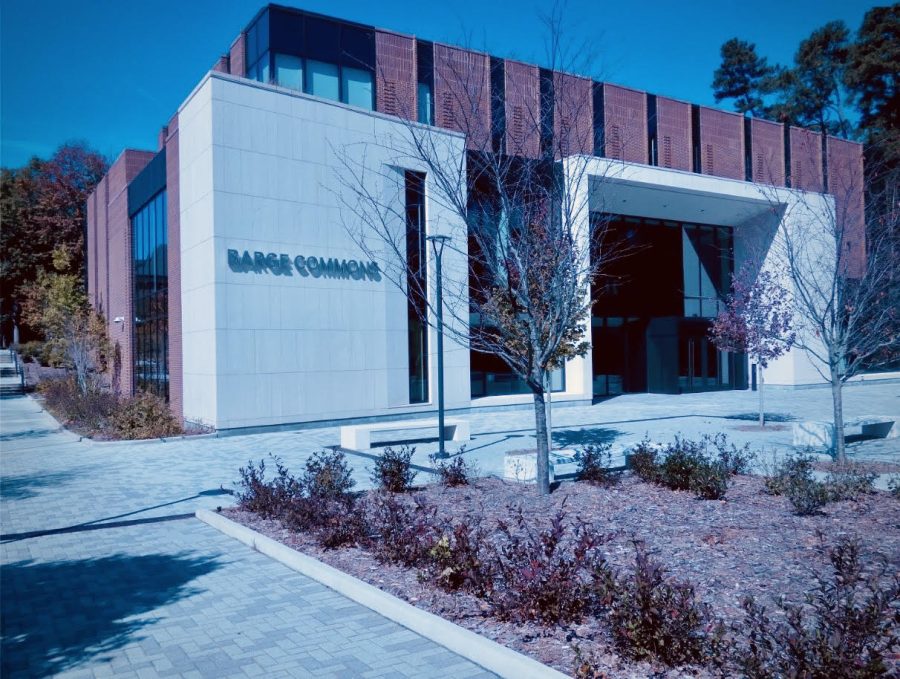Process Behind Progress: Behind the Scenes of Construction on Campus
Today, a person visiting Westminster for the first time in five years would be surprised to see an almost entirely new campus. We have expanded as a school and a community with numerous construction projects across Westminster’s campus, such as a parking deck, football stadium, Hawkins Hall, and Barge Commons. How did these plans come to life? Who made the decisions?
Keith Evans, President of the Westminster Schools, explains that student well-being is always the idea behind major projects. “You start with the long-standing qualities of what students experience. It always starts with academic excellence and a supportive environment.” Evans says. “Students and faculty are always at the top of the priority list regarding new ideas and decisions.”
Evans explains that the planning stage is often the longest and most complex part of the overall process. “There’s a great word that we use a lot around here, and it’s ‘alignment.’ Imagine that Westminster is a train trying to run down the tracks. If the cars on the train are not aligned to the tracks, then the train doesn’t get very far,” says Evans. “So if you have a group of people from all of the people who work [at Westminster] who aren’t well aligned around the same goals, who don’t understand where we’re headed, then the work tends to not get done.” Aligning people with the same goal is critical to reaching that end result. It can take a few years to align a plan between the administrators, the Board of Trustees and its many subcommittees, financial groups, and construction crews. It also takes a lot of time to source and schedule shipments of the materials Westminster must purchase to build.
With this many moving pieces, what does the process look like?
Picture this. The Board of Trustees asks the Building Committee to visit the buildings and discuss with faculty and students regarding building space. During this hypothetical visit, the committee realizes a renovation is needed to accommodate the wants and needs of students and faculty. The Building Committee would then choose a representative to share their findings, an outline of what needs to be changed, and an estimated cost to the Trustees. If the Trustees agree with the need for a renovation based on the research presented, they would talk to the Finance Committee and assess the funds available for the project.
If Westminster has the budget, the plan would be handed over to Toni Boyd, Vice President for Finance and Operations, who would find contractors, construction workers, etc., to execute the plan. However, if the necessary money is unavailable, the Board would ask the Development Committee to figure out the most effective fundraising strategy and work with the Office of Institutional Advancements to facilitate fundraising and acquire the necessary money. Once they have found the means for the plan, then the plan would be handed over to Boyd, who will now find people for the physical construction. Eventually, when the crews have finished working, Westminster has a newly renovated building on campus.
In the case of our most recent round of construction, Westminster leaders recognized that students learn best in adaptable environments. Students need new environments with flexible seating and natural light. Students need to learn teamwork skills because group work is a necessary part of the real world. Flexible seating is required for students to move around and learn in different ways: individually, in teams, and through hands-on projects. The new generations of students moving through Westminster learn in different ways, and Westminster honors that by teaching everyone through the ways they learn best.
This lengthy process of strategizing and planning for students’ needs assures that Westminster attains an excellent final outcome that changes the campus for the better. The new development always puts student life and Westminster’s beliefs at the forefront, such as academic excellence and a supportive environment. “The way that I like to say it is that ‘you don’t change what you believe, you change what you do,’” says Evans. “What this school believes about how it wants to shape the student experience doesn’t really change much, but the world changes.” Especially with new technology impacting students’ learning experiences, schools have to adapt to new teaching methods. However, the old beliefs of Westminster founders have never changed, and Westminster continues to grow into a bigger and better community.


